Beltway 4 through Ho Chi Minh City and Long An , which accounts for nearly half of the entire route, if built at elevated levels will be less dependent on sand sources, and construction will be faster and more effective in the long term, according to experts.
At a recent meeting with the Ministry of Transport and related localities, Chairman of the Ho Chi Minh City People's Committee Phan Van Mai mentioned a new approach in the investment study of Beltway 4, which is to build an overpass for the section passing through the city and Long An province. This solution was proposed in the context that many expressways are facing major obstacles due to the scarcity of sand for embankment.
According to city leaders, the initial investment cost of building an elevated road may be more expensive than running on the ground, but this is a long-term solution to promote the project's effectiveness. The viaduct option also helps the project adapt better to subsidence and flooding... in conditions where the area is heavily affected by climate change.
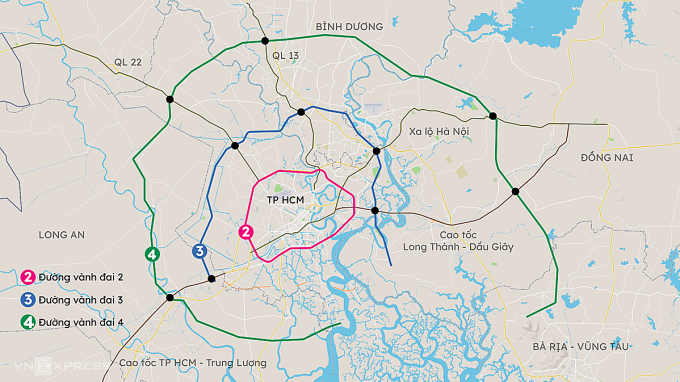
Route of Ring Road 4. Graphics: Khanh Hoang
Beltway 4 passes through 5 provinces and cities: Long An, Ho Chi Minh City, Binh Duong, Dong Nai and Ba Ria - Vung Tau . Currently, the entire route is being studied with a total length of nearly 207 km, of which Long An accounts for more than 78 km, Binh Duong 47.5 km, Dong Nai 45.6 km, Ba Ria - Vung Tau 18.1 km, Ho Chi Minh City 17.3 km. The total investment of the project in phase one is estimated at 106,000 billion VND.
From an expert's perspective, Dr. Pham Viet Thuan, Institute of Natural Resources and Environment Economics of Ho Chi Minh City, agrees with the plan to build elevated sections of Ring Road 4 because it will reduce the risk of shortage of filling materials. According to him, the South is implementing a series of large expressway projects, if we add the projects implemented by the locality, "even if we take all the sand in the Mekong Delta, it will not be enough to meet the demand". Meanwhile, the current exploitation intensity can easily lead to consequences such as erosion, riverbank landslides... affecting the environment.
"Many projects are stalling due to lack of sand filling materials, so not only Ring Road 4, changing the design and construction plan to expressway viaducts should be considered a long-term solution," said Mr. Thuan, believing that building an viaduct will limit adverse changes in natural conditions in the area such as subsidence, flooding, etc. This also helps increase stability and reduce risks during construction and operation of the project.
Dr. Chu Cong Minh, a bridge and road specialist at Ho Chi Minh City University of Technology, said that an elevated road is essentially a viaduct, so the technical solution will be more complicated than a low-lying road. However, an elevated road has the advantage of having fewer intersections with the routes below, allowing vehicles to run smoothly without having to build many different level intersections. Ho Chi Minh City's Ring Road 4 is designed as an expressway, and does not go deep into the urban area (no need to calculate aesthetic factors), so the viaduct option is suitable in current conditions.
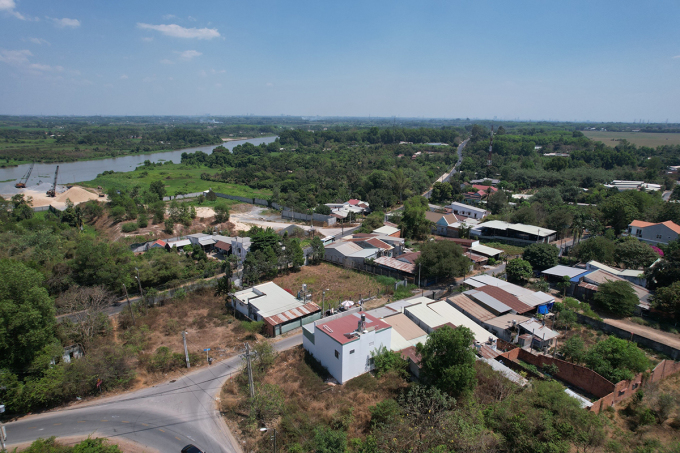
The area that Ring Road 4 is expected to pass through is in Cu Chi district, Ho Chi Minh City. Photo: Quynh Tran
According to Mr. Minh, the above plan also helps speed up construction progress in weak soil sections by reducing waiting time for treatment and foundation reinforcement... In addition, the viaduct increases flood drainage capacity, limiting the separation between areas. Because if it is low, the route will be like a dike cutting across fields and residential roads, affecting people's travel and lives.
"However, the biggest challenge of the viaduct option is the investment cost and the later expansion process is more difficult than going low. Therefore, the study can combine going low with going high to choose the most feasible way," said Mr. Minh.
Meanwhile, Dr. Pham Viet Thuan said that the difference between the cost of building an overpass and a conventional embankment depends largely on the geology and terrain that the route passes through. Unlike mountainous and midland areas, the southern region has weak geology and many canals. If it is low, in addition to the huge demand for filling materials, it is also necessary to take into account the waiting time for subsidence and compensation in the early stages of exploitation... Not to mention, along with the construction of the main road, many related items also need investment such as service roads, overpasses... to serve the travel needs of the surrounding people.
"If we compare all these factors, the total cost of building an overpass is not greater than that of a conventional embankment, especially in areas with weak soil. This solution will bring long-term effectiveness if we consider the stability and life cycle of the project," said Mr. Thuan, citing the Ho Chi Minh City - Trung Luong expressway, with 13 km of overpass passing through complex geological areas, but after 14 years of operation, there has been no problem with flood drainage and it is operating stably.
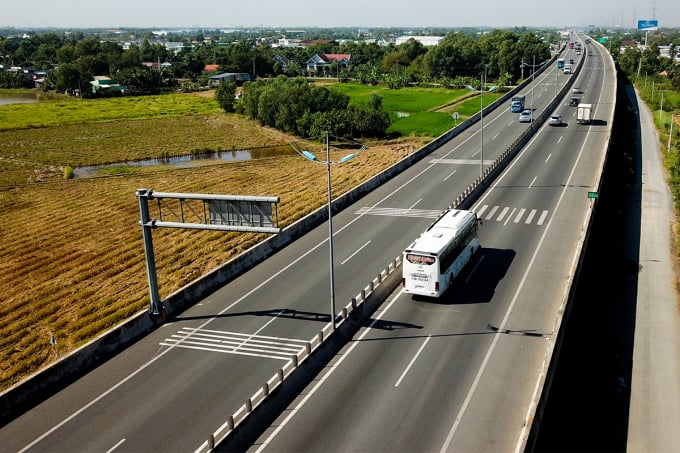
An elevated section of the Ho Chi Minh City - Trung Luong Expressway. Photo: Quynh Tran
Ho Chi Minh City’s Ring Road 4 is being planned to clear the entire land from the beginning and build 4 expressway lanes and 2 emergency lanes first. Each province and city will be the competent authority to implement the section through the area under the form of public-private partnership (PPP).
Localities and consultants will review and agree on the scale, technical standards, specific mechanisms, etc. as a basis for submitting the project to the National Assembly for approval at the mid-year session. The project is expected to start construction in 2025 and be completed in 3 years, helping to create a seamless transportation network connecting highways, national highways, and airports in the key economic region of the South.
The Ho Chi Minh City area is planned to be surrounded by three belt routes, helping to reduce inner-city congestion and connect the Southern Key Economic Zone. In addition to Belt Route 4, Belt Route 3 passes through the city and the provinces of Binh Duong, Dong Nai, and Long An, with a length of more than 76 km, and is being implemented with a plan to complete in 2026. Belt Route 2 is located entirely within Ho Chi Minh City, with a length of about 64 km, and some sections are preparing to be invested in a closed system.
Gia Minh
Source link




![[Photo] Prime Minister Pham Minh Chinh chairs the conference to review the 2024-2025 school year and deploy tasks for the 2025-2026 school year.](https://vstatic.vietnam.vn/vietnam/resource/IMAGE/2025/8/22/2ca5ed79ce6a46a1ac7706a42cefafae)

![[Photo] President Luong Cuong receives delegation of the Youth Committee of the Liberal Democratic Party of Japan](https://vstatic.vietnam.vn/vietnam/resource/IMAGE/2025/8/22/2632d7f5cf4f4a8e90ce5f5e1989194a)

![[Photo] President Luong Cuong attends special political-artistic television show "Golden Opportunity"](https://vstatic.vietnam.vn/vietnam/resource/IMAGE/2025/8/22/44ca13c28fa7476796f9aa3618ff74c4)
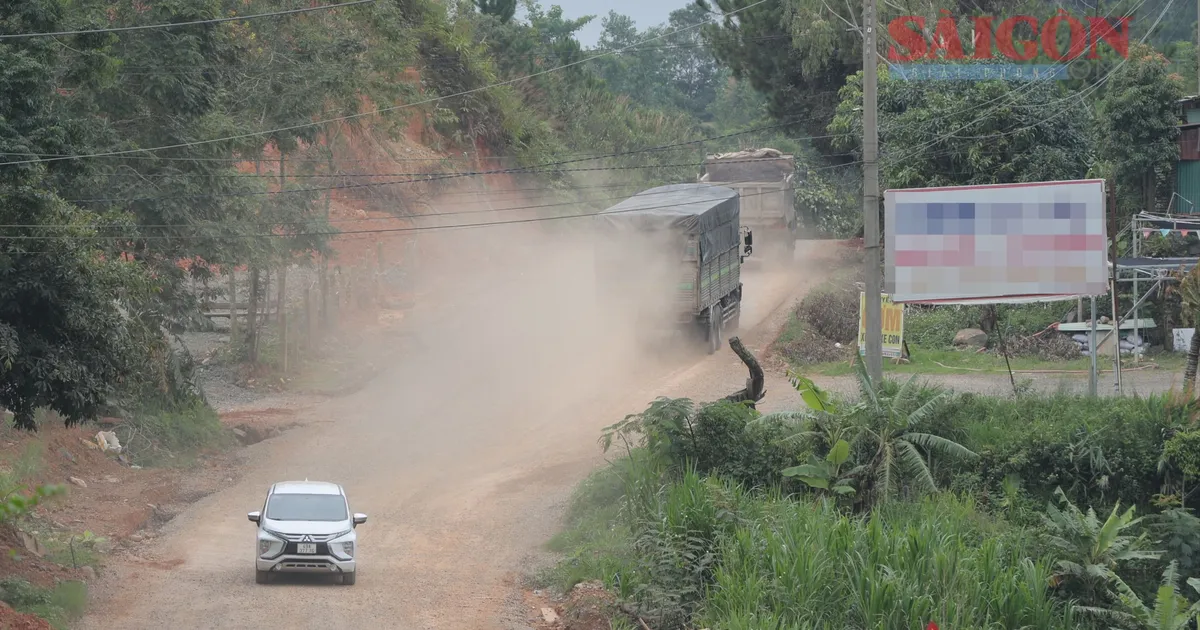




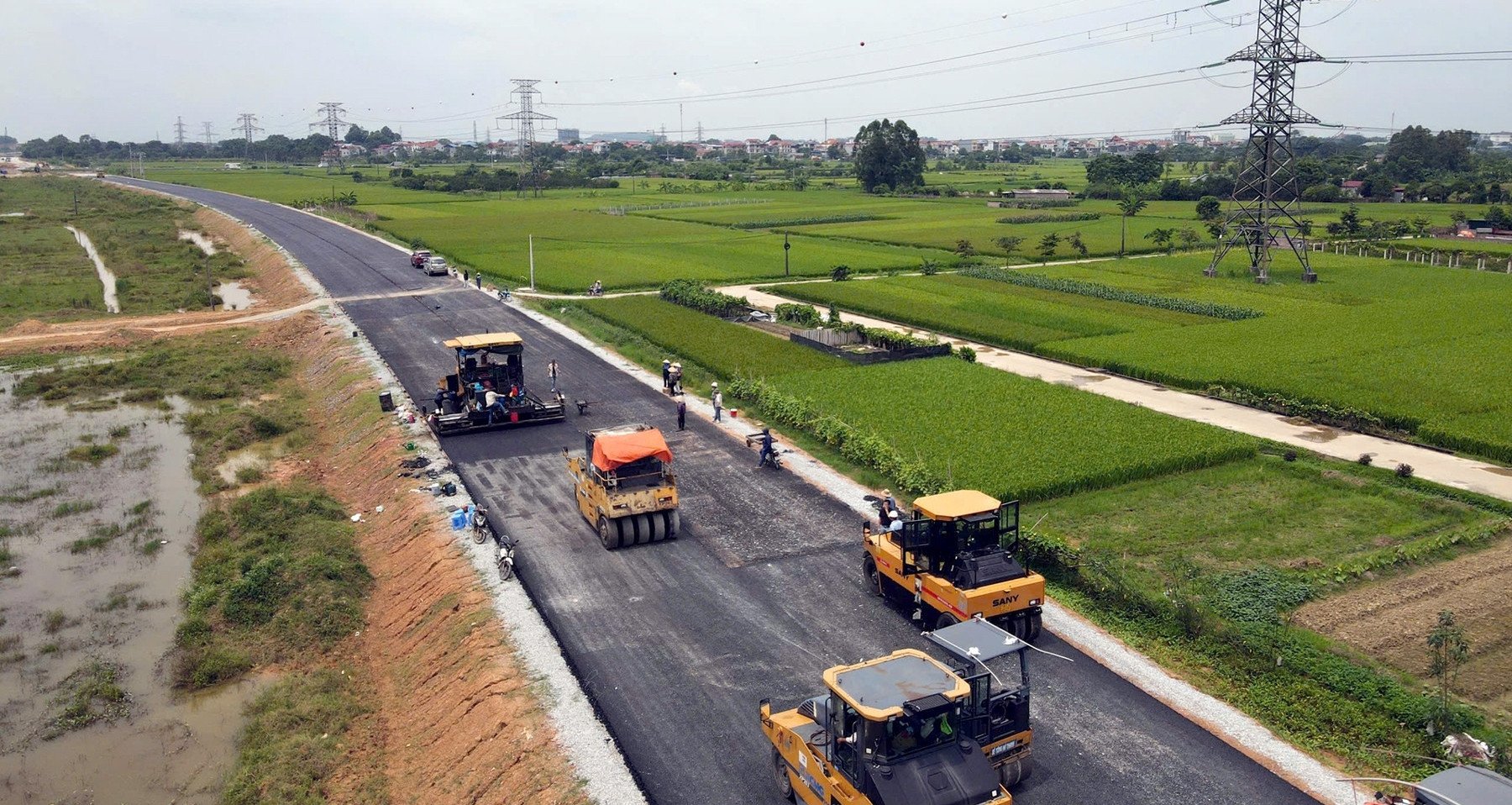

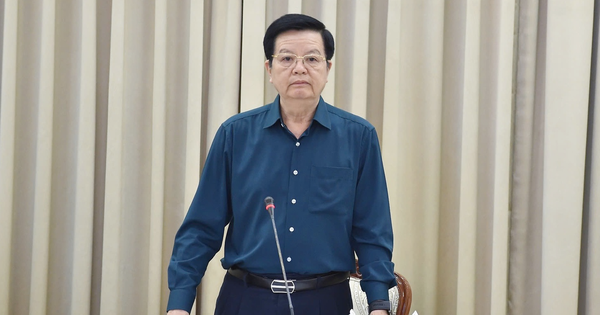










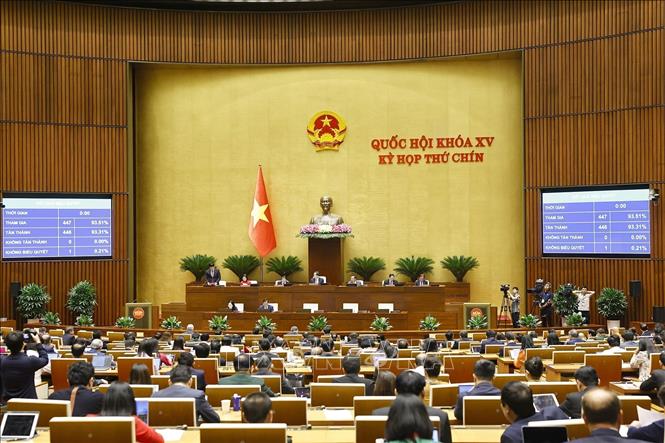










































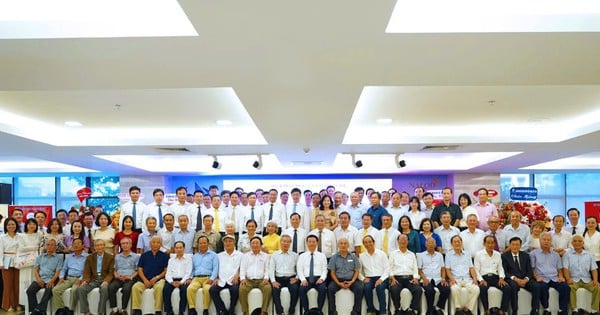

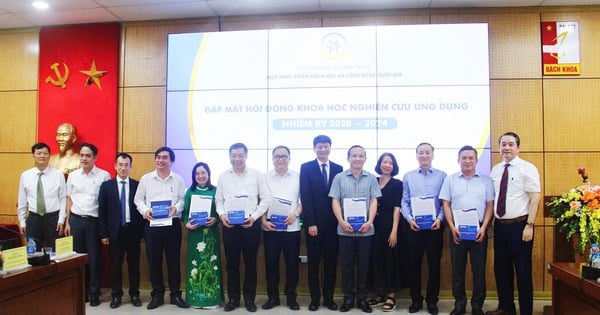
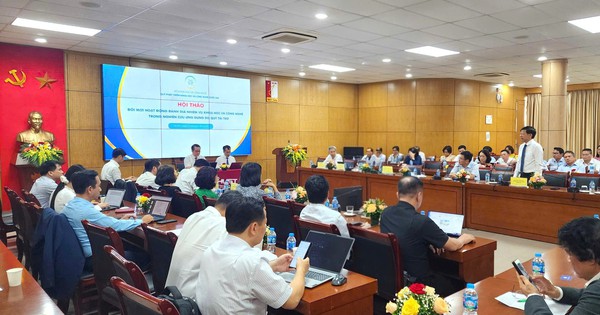








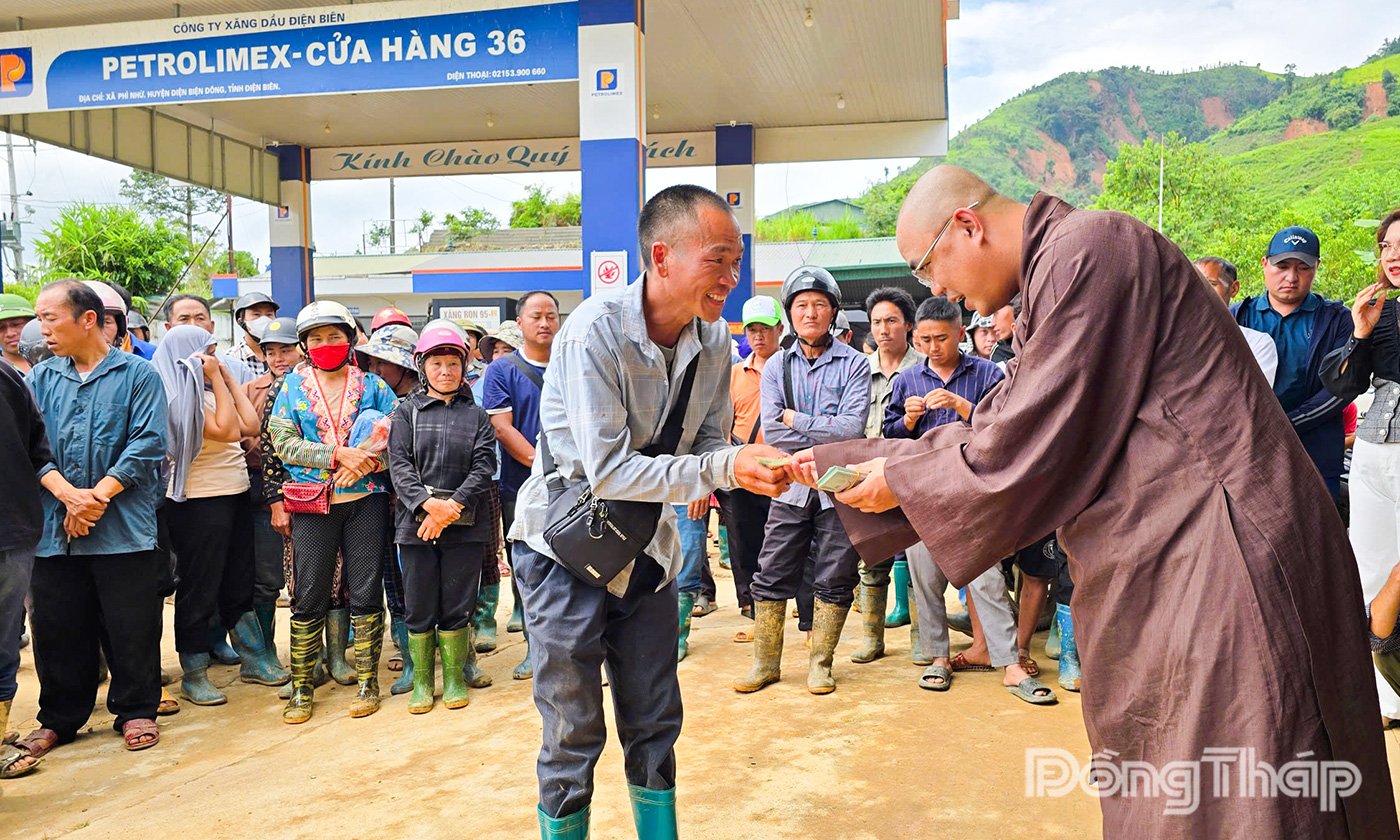
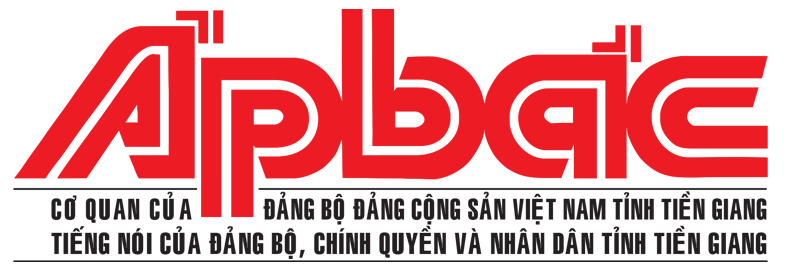




















Comment (0)